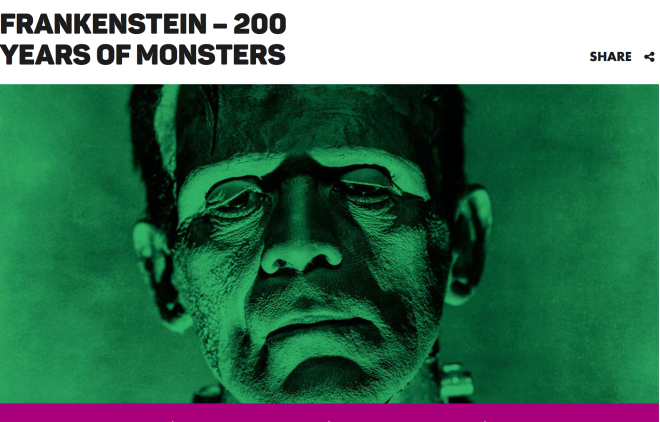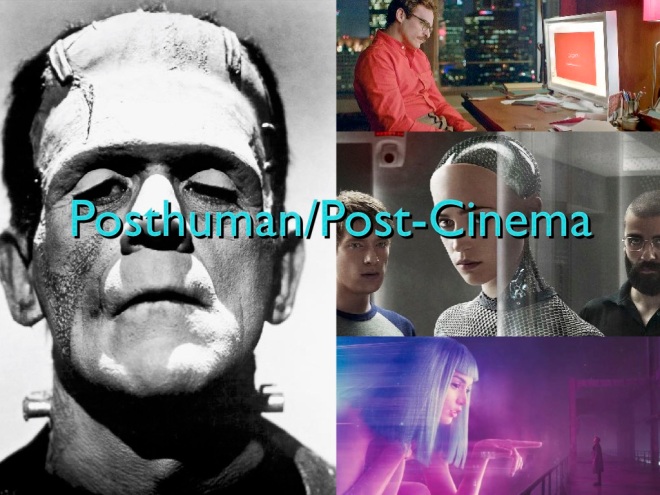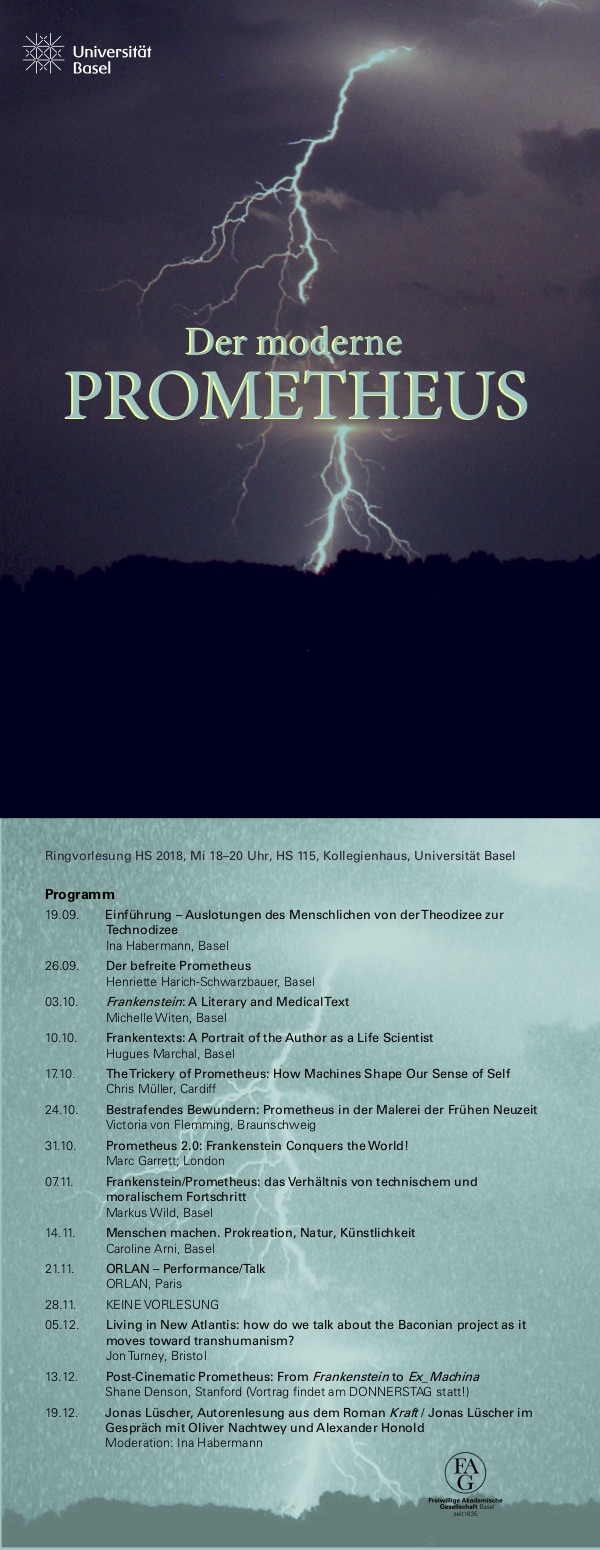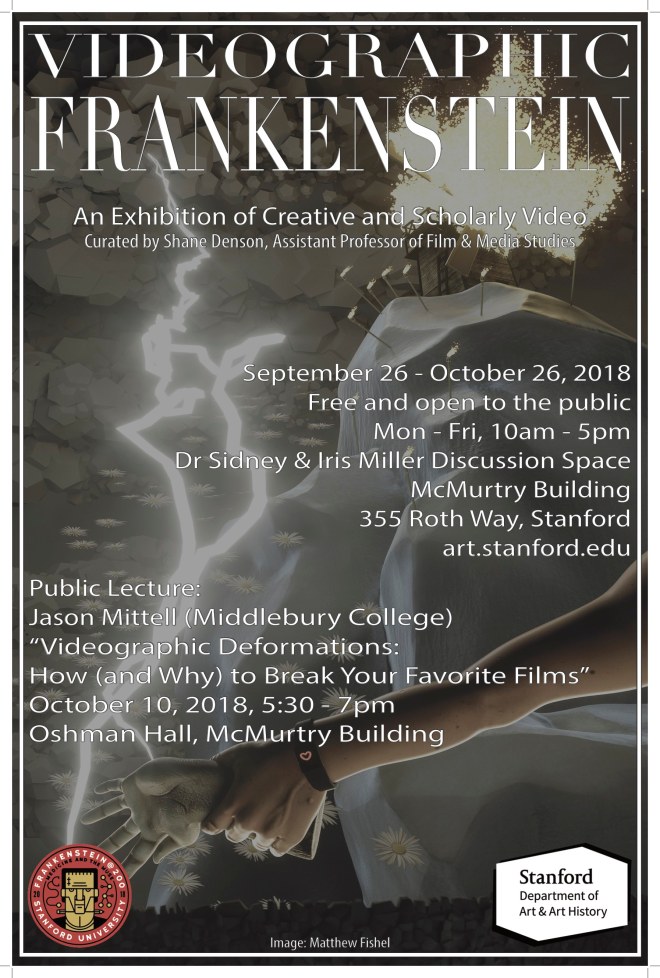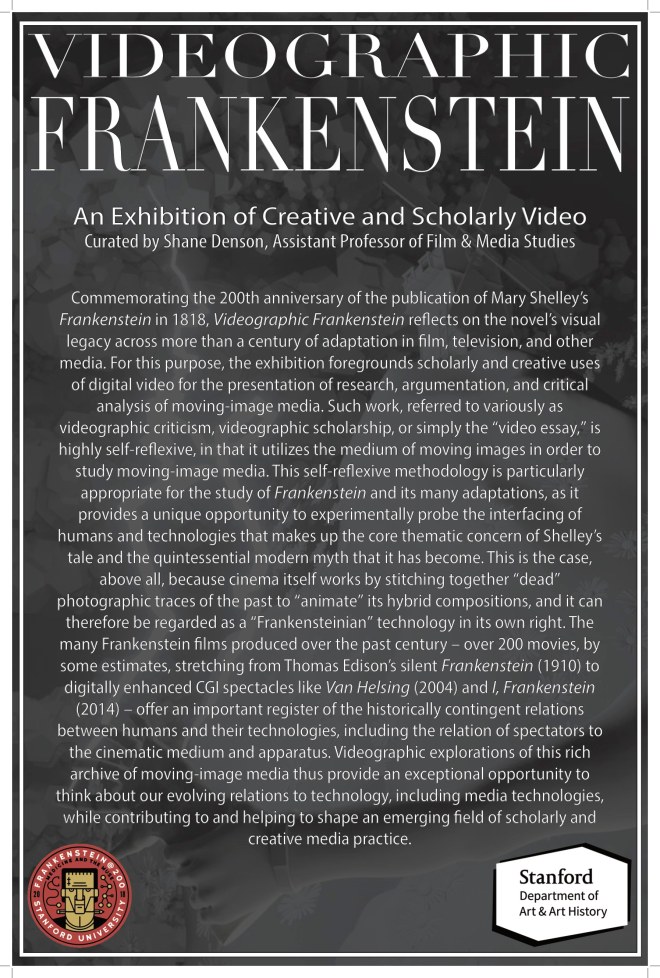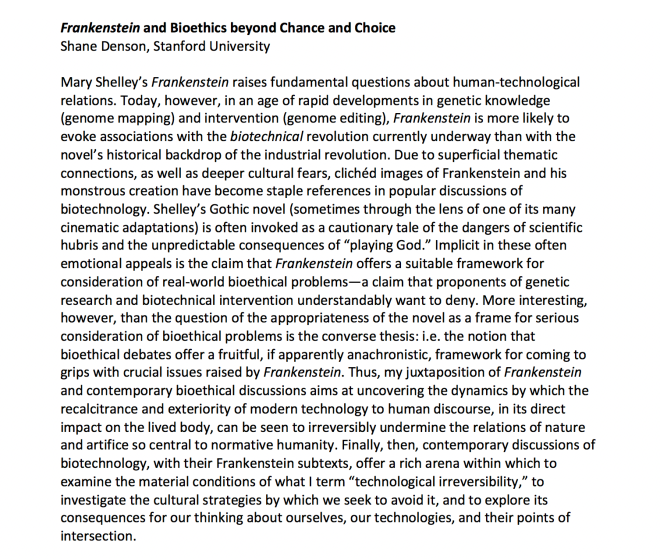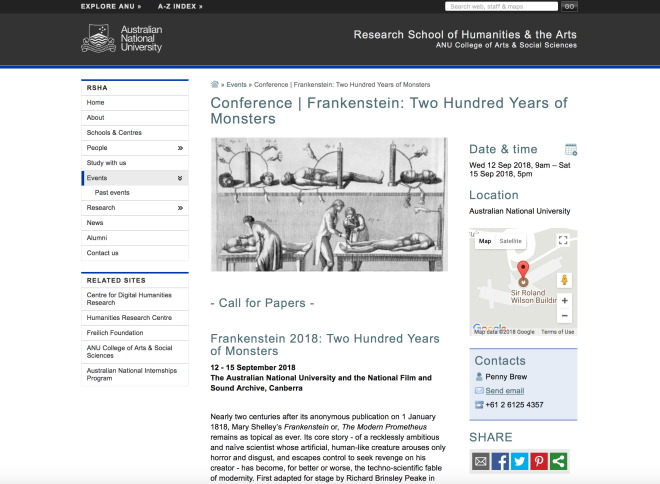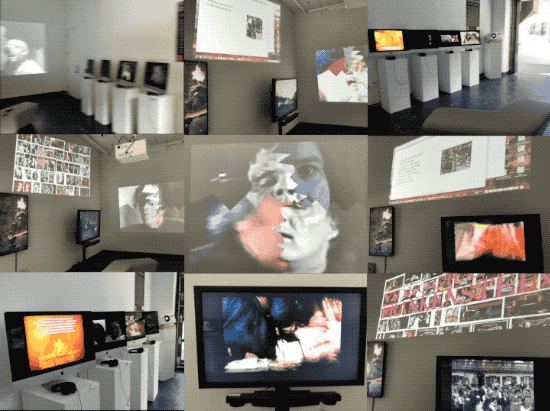
Videographic Frankenstein–the exhibition that I am curating at Stanford–opens today. The show runs from Sept. 26 through Oct. 26, 2018 in the Dr. Sidney and Iris Miller Discussion Space, McMurtry Building.
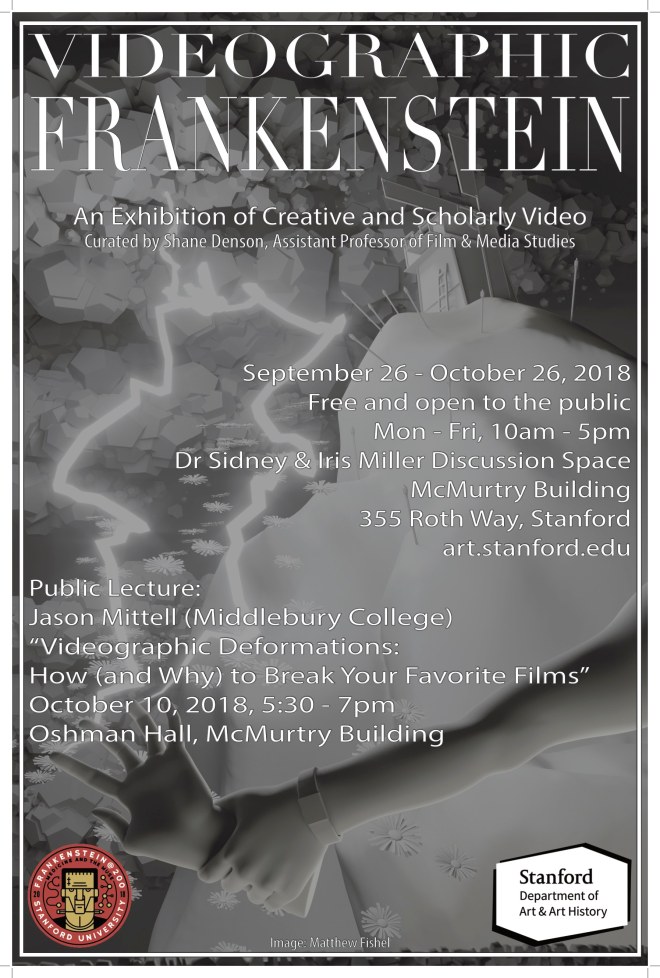
Works featured:
Frankenstein (2018), 2018
Matthew Fishel
Silent Animation LoopSpark of Being, 2010
Bill Morrison
Found Footage Film, 1:07:11Frankenstein’s Television, 2018
Jason Mittell
Video, 10:02Mad Science/Love and the Body in Pieces, 2018
Allison de Fren
Video, 17:18The Meaning of “Animation” in Edison’s FRANKENSTEIN, 2017
Shane Denson
Video, 12:57Red, Not Blood: Godard, Frankenstein, and Eastman Red, 2018
Carlos Valladares
Video, 6:46Persona versus Frankenstein, 2015
David Verdeure, a.k.a. Filmscalpel
Video, 4:15On Galvanism: Electricity, Frankenstein, and the Moving Image, 2018
Spencer Slovic
Video, 7:30Sight and Sound Conspire: Monstrous Audio-Vision in James Whale’s FRANKENSTEIN (1931), 2015
Shane Denson
Video, 8:47Questioning the Human Machine in EX MACHINA, 2016
Allison de Fren
Video, 10:26Horror and Humor: Frankenstein’s Comic Offspring, 2018
Lester D. Friedman and Kristine Vann
Video, 17:38
The exhibition was made possible by a Frankenstein@200 Initiative grant from the Medicine and the Muse Program at Stanford.
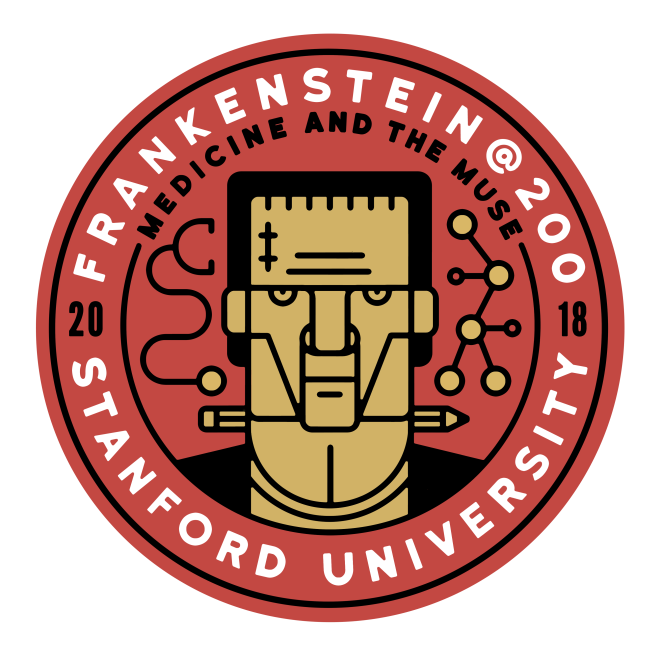
More information about the exhibition can be found here.
